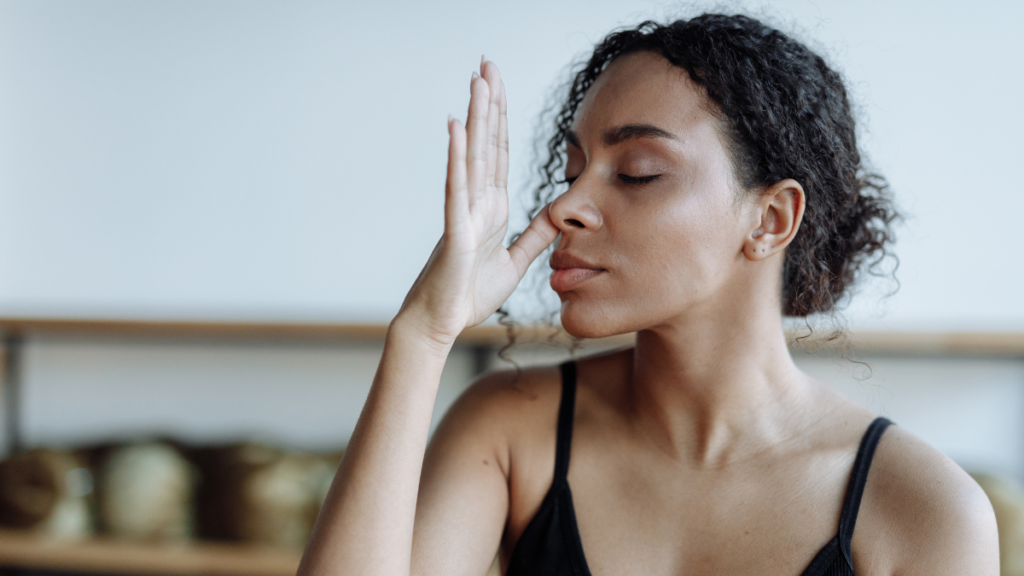With so much going on around us every day, it’s easy to overlook one of the most powerful tools for better health — our breath. Conscious breathing can transform your physical, mental, and emotional wellness. It’s simple, accessible to everyone, and can be done anywhere. Here’s how to use conscious breathing in your daily routine for better health.
What is conscious breathing?
Conscious breathing involves bringing awareness to your breath, focusing on the rhythm, depth, and pattern of inhalation and exhalation. Unlike the automatic breathing controlled by your subconscious mind, conscious breathing allows you to actively engage and optimize this essential function.
The benefits of concious breathing:
- Reduces stress and anxiety: Controlled breathing activates the parasympathetic nervous system, helping your body shift from “fight or flight” mode to “rest and digest.” This reduces cortisol levels and promotes relaxation.
- Improves focus and clarity: Concentrating on your breath clears mental clutter, enhancing focus and decision-making. It’s a natural antidote to distractions.
- Oxygen efficiency: Conscious breathing increases oxygen supply to the body, improving cellular function.
- Heart health: It lowers blood pressure and improves circulation.
- Immunity: Deep breathing stimulates the lymphatic system, aiding in detoxification.
- Enhances emotional regulation: Breathwork helps process and release pent-up emotions, offering a healthier response to life’s challenges.
- Supports better sleep: Breathing exercises before bed can calm the mind, making it easier to fall and stay asleep.

RELATED: Simple Ways To Reduce Holiday Stress.
How to use conscious breathing in your daily life.
Once you know how to use concious breathing, adding it to your daily routine is a piece of cake. Taking the time to focus on nothing else except for your breathing can do wonders for your mental and physical health. Breathing seems so effortless, but putting some time into it can make a worlds difference.
Make it part of your morning ritual.
Starting your day with conscious breathing as part of your morning ritual can set a positive tone for the hours ahead. Before reaching for your phone or starting your day, take a few moments to focus on your breathing. Sit in a comfortable position, close your eyes, and practice deep diaphragmatic breathing—inhale deeply through your nose, letting your belly expand, and exhale slowly through your mouth. This practice calms the mind and increases oxygen flow to your body, boosting energy and mental clarity.
Use conscious breathing when you exercise.
Adding conscious breathing into your exercise routine can significantly enhance both performance and mindfulness. Instead of breathing without giving it a thought, focus on coordinating your breath with your movements. For example, inhale during preparatory or resting phases, and exhale during exertion, like when lifting weights or pushing off during a run.
Conscious breathing increases oxygen flow to your muscles, reducing fatigue and improving endurance. It also helps maintain a steady rhythm, preventing you from overexerting. Activities like yoga, Pilates, and stretching naturally emphasize breathwork, but even in high-intensity workouts, staying aware of your breathing can enhance focus and help you push through challenging moments. By making conscious breathing a core element of your exercise, you’ll maximize your physical and mental benefits.

RELATED: The Best Self Care Morning Ideas For A Great Day Ahead.
Breathe before meals.
Using conscious breathing before a meal can have a profound impact on digestion and overall well-being. Taking a few moments to pause, close your eyes, and focus on your breath can help activate the parasympathetic nervous system, signaling your body to “rest and digest.” Try a simple technique like diaphragmatic breathing, inhaling deeply through your nose and allowing your belly to expand, then exhaling slowly through your mouth. This practice helps calm the mind, reduce stress, and prepare your digestive system to work efficiently.
During stressful moments.
Stress is a normal part of our daily lives, and using conscious breathing to help lower stress can be of great help. When faced with pressure or anxiety, the body often shifts into “fight or flight” mode, causing shallow, rapid breaths. By taking a moment to focus on your breath, you can counteract this response and activate your body’s relaxation mechanism. Try a technique like box breathing: inhale for four counts, hold for four, exhale for four, and pause for four. This rhythmic pattern helps slow down your heart rate and clear mental fog, allowing you to approach the situation with a calmer, more focused mindset.
Make breathing part of your bedtime routine.
Making conscious breathing part of your bedtime routine can help ease the transition from the busyness of the day to a peaceful night’s sleep. Before lying down, take a few minutes to focus on your breath and create a calming atmosphere. Techniques like the 4-7-8 breathing method, where you inhale for 4 seconds, hold for 7, and exhale for 8, can help relax your nervous system and prepare your body for rest. As you practice deep, slow breathing, your heart rate slows, and stress melts away, signaling to your body that it’s time to unwind.

RELATED: The Benefits Of Intentional Living That Will Change Your Life.
The best conscious breathing techniques to try.
There are so many different breathing techniques you can try and they all work really well. Try switching up your techniques until you find the one that works best for you.
Diaphragmatic (Belly) Breathing.
Belly breathing is a simple technique that promotes relaxation and reduces stress. To practice belly breathing, sit or lie down in a comfortable position. Place one hand on your chest and the other on your belly. Inhale deeply through your nose, allowing your belly to rise as you fill your lungs with air, rather than your chest expanding. Exhale slowly through your mouth, letting your belly fall. Focus on slow, deep breaths, and continue for 5-10 minutes to calm your mind and improve oxygen flow to your body.
4-7-8 Breathing.
The 4-7-8 breathing technique is an easy way to relax the mind and body, promoting better sleep and reducing stress. To practice 4-7-8 breathing, begin by sitting or lying down in a comfortable position. Close your eyes and inhale quietly through your nose for a count of 4 seconds. Hold your breath for a count of 7 seconds, and then exhale completely through your mouth for 8 seconds, making a whooshing sound. Repeat this cycle for 4-8 rounds, focusing on each breath to calm your nervous system and prepare for rest or relaxation.
Alternale Nostril Breathing.
Alternate nostril breathing is a calming technique that helps balance the body and mind, promoting relaxation and focus. To practice this, sit comfortably with your spine straight. Use your right thumb to close your right nostril, and inhale deeply and slowly through your left nostril. At the top of your inhale, close your left nostril with your right ring finger, and then release your right nostril. Exhale slowly through your right nostril. Inhale through your right nostril, close it with your thumb, and exhale through your left nostril. Continue alternating nostrils for 5-10 minutes, helping to reduce stress and improve mental clarity.

RELATED: The 7 Simplest Ways To Practice Mindfulness.
Conclusion.
Conscious breathing is more than a wellness trend— it’s a life-altering practice with scientifically backed benefits. By simply paying attention to your breath, you can unlock a healthier, calmer, and more focused version of yourself. Whether you’re looking to reduce stress, boost energy, or improve overall well-being, conscious breathing is a powerful ally on your journey to better health.
Take a moment, breathe deeply, and let your breath guide you toward a healthier life.
Happy Breathing,
Your Wellness Warrior!

